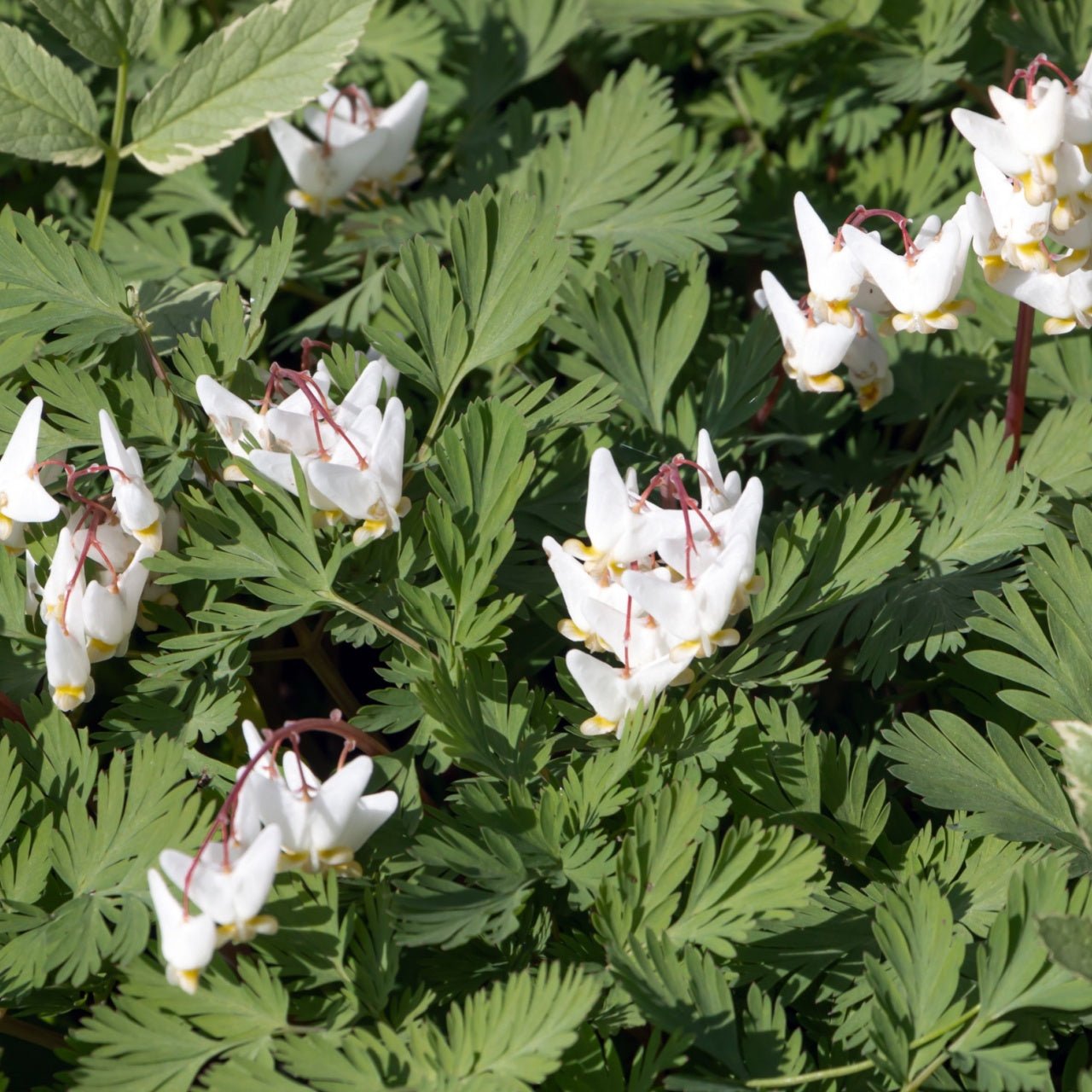




Dutchman's Breeches
We sell bare root plants - click here to see what you'll receive
Dutchman's Breeches - Dicentra cucullaria
Dutchman's Breeches is a spring wildflower with distinctive gray-green, finely divided leaves and unique, drooping clusters of white, pantaloon-shaped flowers resembling miniature hanging pants. It is a captivating and delicate spring ephemeral plant that offers several benefits when incorporated into the landscaping. Native to North America, it is a member of the poppy family and can be found growing in rich, moist woodlands, making it an ideal addition to woodland-themed gardens or naturalized landscapes.
Dutchman's Breeches (Dicentra cucullaria), also known as "Little Blue Staggers," is a white woodland flower that blooms from March to April. This spring ephemeral is also a perennial native to eastern North America. It also grows naturally in the Pacific Northwest.
Dicentra cucullaria is often found in the eastern and Pacific Northwestern woodlands of the United States. The flower grows naturally in the wild on forest floors under dappled sunlight, on moist rocky slopes, and along stream banks. After their blooming cycle ends, the flowers go dormant, and their leaves and stems fall to the ground to make way for summer flowers.
Dutchman's Breeches Appearance
They range from 6" to 12" tall and bloom for about two weeks. Their creamy white or pinkish flowers resemble pairs of old-fashioned Dutch pantaloons hanging upside-down from a clothesline. Each blossom's outer petals form a puffy 'V' shape that converges in a yellow-tipped base. The plant's feathery compound leaves look like fern fronds, changing color from gray-green to pale yellow before disappearing for the rest of the year.
Stunning In Landscapes
Little Blue Staggers makes an attractive addition to many landscapes. The plant is especially well-suited to wildflower and woodland gardens and works well in areas shaded by mature trees. Its beautiful flowers, with their delicate and cheeky blossoms, will surely draw attention to your spring greenery.
They should be planted in the fall. They grow from bulb-like underground plant structures called corms, which can multiply underground. Mature corms can be divided and transplanted to propagate new plants.
Pollinators love Dicentra Cucullaria
It offers nectar to bumblebees, cuckoo bees, and other bees that feed through the plant's perforations as they pollinate the flowers. Ants also help propagate the plant by carrying its seeds into new territory.
If you want to add beauty and a touch of humor to your garden, consider planting a few near your trees. These flowers are a sure way to welcome the first flush of spring.
Which is the best location for them?
It can be planted in part shade and well-drained soils. It's perfect for an organic look in shade gardens or wooded areas.
What do they look like?
It is fern-like with grey-green leaves, producing heads of white pants-shaped flowers in early spring. Its unique booms are striking in any garden.
How to grow them?
Once established, it requires little care. Water the plant when wet and put mulch on top of the soil to keep the moisture in.
Will they work in wildlife gardens?
Yes! It has many early spring pollinators, including bees. It flowers in early spring and will nectar in cold weather when other plants won't.
Can they be cultivated in pots?
Plant Dutchman's Breeches plants in pots, but place it where there is a combination of partial to whole shade and moist but well-drained soil. That means it's suitable for little gardens.
| Planting zone | [3, 4, 5, 6, 7] |
|---|---|
| Bloom season | Spring |
| Bloom color | White |
| Height At Maturity | Over 12" |







Dutchman's Breeches
| Planting zone | [3, 4, 5, 6, 7] |
|---|---|
| Bloom season | Spring |
| Bloom color | White |
| Height At Maturity | Over 12" |

